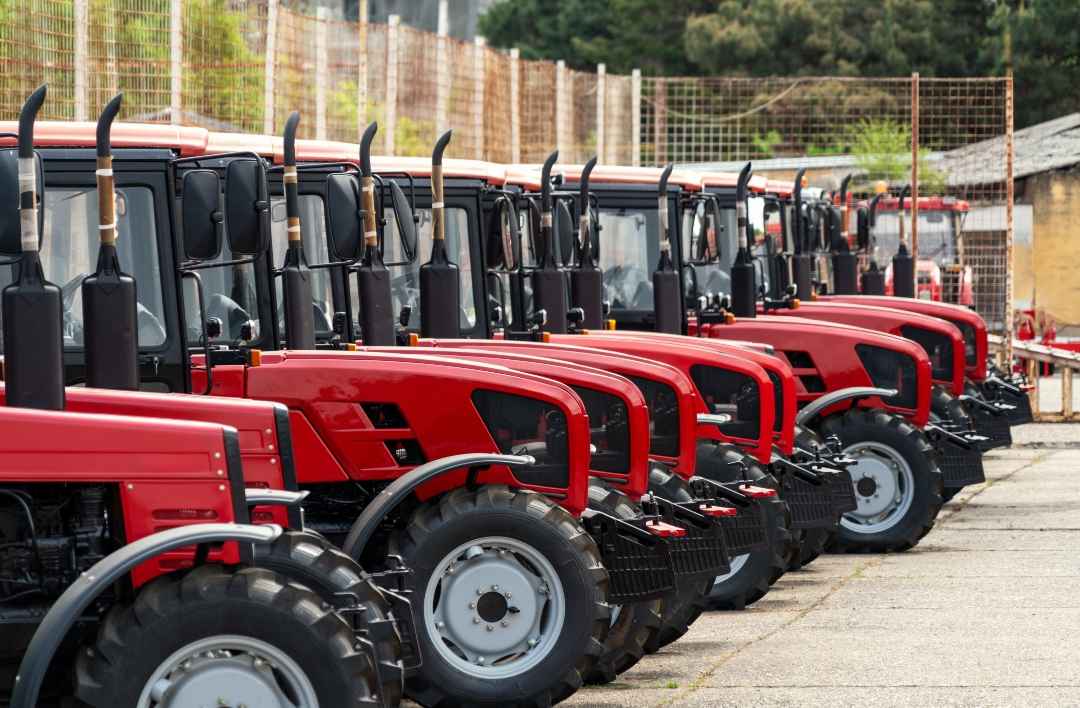From Ag Slump to Smart Moves
Industry Leans on Tech, Adapts to Market
After years of growth, the agricultural equipment market in the United States is experiencing a notable downturn. Facing economic headwinds, uncertain trade conditions and rising costs, both farmers and manufacturers are adjusting their strategies.
To offset declining sales and ensure long-term viability, both sides of the industry are increasingly looking to double down on technology.
The Association of Equipment Manufacturers (AEM) reports continued weakening in U.S. combine and tractor sales.
In July 2025, U.S. sales of combines fell 43.7% while total agricultural tractor sales fell 4.9% for that same month, compared to 2024. Conversely, Canadian sales of combines grew 11.4% in July 2025 compared to that same month last year. Canadian sales of two-wheel-drive tractors also increased slightly, growing 3% in July 2025 compared to the year before.
“While we’re encouraged by the modest growth in Canadian combine and tractor sales, the significant declines in the U.S. reflects ongoing caution in the marketplace,” Curt Blades, senior vice president at AEM, said.
The drop comes after years of volatility. While demand surged during the pandemic, production has since caught up and rising interest rates and lower farm incomes have cooled equipment spending.
Blades noted that the current statistics are “not a huge surprise based on the way things have been evolving for the last six to eight months. We've kind of seen this coming [so] manufacturers have been preparing."
Farmers Delay Investing Amid Market Uncertainty
Blades identified unpredictability as the biggest factor in purchasing new equipment, among other reasons.
"High interest rates, global trade uncertainty and increased input prices are causing farmers to delay major equipment purchases," he said.
Tom Gauthier, founder of AgTechLogic, a precision ag tech company located in Mesa, Arizona, echoed that point: "Input costs and labor are still high and trending up. They still need to find ways to reduce costs on the farm [and] many are trying to get more out of the equipment they own."
Right now, it’s all about caution, according to Jeremy Matuszewski, CEO and founder of Thunderstruck Ag, a marketer and distributor of farm equipment solutions in Winkler, Manitoba.
“Farmers are selective with where they spend, focusing on maintaining what they’ve got [rather than] expanding,” Matuszewski said.
“On the business side, many companies are pulling back on aggressive market entry plans and doubling down on where they already have traction. There’s a lot of value in tightening up operations and making sure every dollar spent delivers ROI [return on investment].”
To that end, many farmers upgraded equipment during the boom years and are opting to maintain or modestly upgrade existing machinery rather than buy new.
Matuszewski agreed.
“With tariffs and global supply chain issues, domestic manufacturing is going to take center stage again and that’s going to come with a cost,” he said.
“We’ll see higher equipment prices, but also strong competition between OEMs [original equipment manufacturers] trying to grab market share.”
In addition, labor remains a key concern. "It's getting harder to find, harder to keep and more expensive to train,” Matuszewski added. ”That’s where emerging tech is going to be a game changer,” he predicted.
Technology & Retrofitting Take Center Stage
Manufacturers are responding with precision ag tools, retrofitting kits and digital platforms to help producers get more from existing equipment.
"It’s very important for farmers to be operationally efficient," Blades said. "One proven way is adopting precision ag technology."
Gauthier agreed, noting that “technology companies need to listen and react faster, offering easy-to-use and maintain solutions that make sense and give the grower or dealer the capability to provide input to the technology.”
Major brands are focusing on tech:
Case IH is expanding its FieldOps platform, designed to connect machines and manage data across planting, harvesting and machine performance.
AGCO-PTx Trimble unveiled its OutRun autonomous grain cart retrofit kit, part of a broader push to deliver unmatched tech integration.
John Deere continues to invest in retrofit options, such as the Precision Essentials Kit and See & Spray technology.
"Autonomy helps farmers hit their ideal operating window by extending their working day and freeing up labor so they can complete additional tasks, particularly during busy times of the year,” Kyle Barry, John Deere manager, Precision Upgrade Marketing, said.
“Whether they need to get to planting in the spring or tillage after harvest, having an autonomous option helps allocate labor to higher-value tasks.”
Beyond product innovations, manufacturers are rethinking business models.
Gauthier noted an industry shift toward recurring revenue from tech subscriptions and usage-based pricing.
"All agriculture equipment dealers should be finding ways to generate recurring revenue through software and technology subscriptions as the percentage of sales will see revenue increase in data and software use versus steel," he noted.
“The software needs to be easy to deploy, operate and report on the results,” he added.
Seeds of Hope
One perceived boost for the market may come in the form of the “One Big Beautiful Bill” orchestrated by the administration that will allow for meaningful tax relief and structural advantages for the farming sector — especially with permanent expenses, income deduction, estate tax reform and loan incentives. These changes can enhance liquidity, investment capacity and generational stability for many.
However, the benefits also seem disparate in that:
Large operations may capture a disproportionate share.
Rural economies could suffer if the Supplemental Nutrition Assistance Program cuts reduce demand.
Small and entry-level farmers may still face hurdles.
Looking ahead, industry leaders are hoping for stabilization by late 2025 into 2026. As farmers regain confidence and crop conditions improve, the push toward smarter, more connected operations is expected to shape the next growth phase in agricultural equipment.
To that point, Blades remains hopeful: "Any farmer plants seed with faith and optimism."


